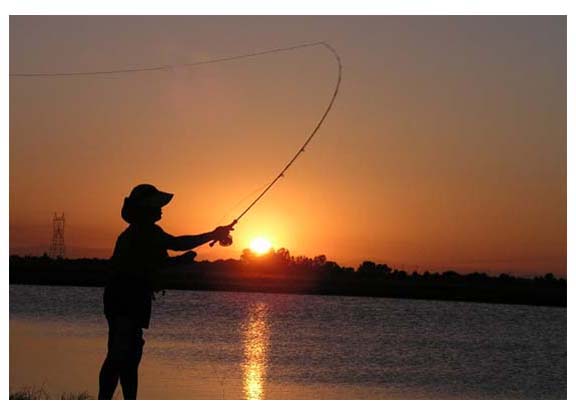I miss rainy winter days.
I miss them, not because rain is good for streams or because rain gives us water to drink. Or because rain means more fish to catch.
I miss the rain providing an excuse to stay indoors and read an obscure book about fishing.
Thankfully, we had a mini rainstorm the other day, which provide the chance to hang out in one of the favorite places in my home town, Section SH685 of the Shields Library on the University of California-Davis campus.
This section of the musty stacks contains the old books on fishing with titles like “The Art of Angling Improved in all its Parts, Especially Fly-fishing,” By Richard Bowlker, published in 1758. Or “Fly-Fishing and Fly-making for Trout, etc.,” written by J. Harrington Keene in 1886. Or “Fishing with the Fly: Sketches by Lovers of the Art, with Illustrations of Standard Flies,” collected by Charles F. Orvis & A. Nelson Cheney and published in 1883.
While the language might be a little arcane, what’s noticeable in reading these books is how some things haven’t changed for the modern-day fly fisher as evident in an essay called “The Confessions of a Duffer” written by Andrew Land in 1891 in the book “Angler Sketches.”
“I invariably fall in and get half drowned when I wade. My waders let in water,” writes Land. “When I go out to fish, I usually leave either my reel, or my flies or my rod at home. Perhaps no other man’s average of lost flies in proportion to taken trout was ever so great as mine.”
“If I do spot a rising trout, and if he does not spot me as I crawl like a serpent towards him, my fly fixes in a nettle, a rose bush or what not behind me,” he says. “I undo it, or break it, and put up another, make a cast and ‘plop,’ all the line falls in with a splash that would frighten a crocodile.”
“I can’t keep a fly book,” he said referring to a book-like carrying case for flies. “I stuff the flies into my pockets at random, or stick them into the leaves of a novel, or bestow then in the lining of my hat or the case of my rods.”
Land recall when he first used one of those newfangled things called the landing net:
“Never, till 1890 in all my days did I possess a landing net. I thought it seemingly to carry a landing net. I put the handle through the buttonhole of my coat,” he wrote. “I saw a big fish rising. I put a dry fly over him; the idiot took it. Upstream he ran, then downstream, then he yielded to my rod and came near me. I tried to unship my landing net from my button hole. Vain labor! I twisted and turned the handle, it would not budge. Finally, I stooped, and attempted to ladle the trout out with the short net; but he broke the gut (leader) and went off. A landing net is a tedious thing to carry.”
And who hasn’t done this back in the catch-and-keep days?
“If I do catch a trout, I lay him under a big stone, cover him with leaves, and never find him again.”
Like much of the writing in the 1800s, the meaning of what is said is illusive, but it sounds so good, like ancient fish poetry.
“Why, a persevering reader may ask, do I fish? Well, it is stronger than myself, the love of fishing; perhaps it is an inherited instinct, without the inherited power. I may have had a fishing ancestor who bequeathed to me the passion without the art.”
Many of these early outdoor writers opine that fly fishing has little to do with catching fish, rather enjoying the outdoor experience.
“The anglers does not seek the stream solely for the fishes he may capture, but rather in search of peace and quiet,” writes Charles Bradford in “The Contented Anglers,” which was published in 1904. “The fishes are merely pleasant features of the favorite domain.”
“If he takes one fish, he is pleased; if two, delighted; if he has but a single strike he is satisfied, and if he has but one mere nibble he is repair for the trip. He judges the day, the locality, and the beauties of nature in generally equally as important as the species he seeks. The fields, the skies, the waters, the trees, and the joyful living things that inhabit these – the birds, the flowers, the fishes – are more enchanting to him than the creel full of trout or bass.”
In the book “Familiar Fish: Their Habits and Capture” written by in 1900, Eugene McCarthy suggests that to support fish stories anglers taking photographs with new-fangled film cameras that replaced the cumbersome ones of the day that used glass plates to capture images:
“In the present age, photography has been added to the necessary requirements of the fisherman. Not only can beautiful bits of scenery be preserved, but also the scenes of happy outings, circumstances connected with them, and especially noted catches of fish. Photographs of fish caught will prove to be of the greatest value, since by showing them one is always able to prove any fish stories told. All stories, no matter how truthful, are doubted now-a-days.
McCarthy provides some advice for how Mother Nature’s compass can help lost anglers:
“There is never any necessity for ignorance of the points of the compass when in the woods – that is, during the daylight – as Nature provides several methods of determining them. Nearly all trees will be found to have a strip of moss along the trunk. It is a known fact that in three quarters or seven eighths of the cases it is on the north side. By noting several trees, the majority having the moss on the same side will indicate direction. By closely observing the spruce tree, it will be found an invariable rule that the heaviest branch are on the south side. The Canadian Indians also claim that on every perfect hemlock tree the topmost twig bends to the east.
In The Angler’s Secret, published in1904, Charles Bradford provides a recipe for dying fly lines and for tackle, bamboo rods and natural bait for catching bass:
“To dye a line blue, soak in indigo water; the stronger the dye, the deeper the color. To dye green, soak in strong decoction of green tea. To dye brown soak in strong coffee.
“There are two kinds of fishing tackle – one that is practical in fishing and another that is used to decorate the walls of a dining room library or camp. The first is too good to waste on a wall and the other is too frail and generally shoddy to angle with.
“The best is the cheapest, in the long run, in fishing tackle as in everything else. By best I do not mean fanciest. Gold buttons on a waistcoat will not add to the wearing quality of the material, and a diamond-studded reel would not run any freer or last any longer than the standard article.
“Natural Baits – The wild oat’s bearded seed makes a killing trout fly,” he said of a seed pod that is found mostly in southern Europe. “And black bass cannot resist a silvery willow leaf if flailed like a live minnow.”
In his 1894 book “The Boys Own Guide to Fishing,” John Harrington Keene argued that to be a real fly fisher the youngsters should fish with a fly rod rather than a long, single piece cane pole, which was commonly used in the day:
“In order that the fly may be cast lightly, as if it fell accidentally on the water, it is necessary in this form of fishing to use a rod possessing pliancy, strength, and lightness – that is necessary if you want to be ranked as a true fly-fisherman. Of course you can fish with a beanpole, as for suckers, but there is no sense of fitness in doing so. You wouldn’t write a letter home with a broom handle; and so I will assume that you desire to have tackle befitting the aristocratic fish you are pursuing.”
In 1886, Frederick Halford wrote “Floating Flies and How to Dress them,” which was one of a number of his first books to popularize dry fly fishing, a style of angling added to what he calls the “chuck and chance it” wet fly fishing of the day. With dry fly fishing, of course, the angler had to cast in order to dry the hackle – a practice was relatively new to his fellow anglers.
“After the fly has been wetted, it must not be returned at once to the water, but thoroughly dried by making a series of false casts backwards and forwards in the air, so as to free the hackle, wings and body from all moisture. In the act of ‘drying the fly,’ as this process of wafting it to and fro is called, as well as in the act of throwing, the experienced angler needs to give ample time to the line to travel out to its full extent before returning it, neglect of this precaution causing the fly to be ‘cracked off’ and necessitating the loss of fly as well as time, and occasionally temper, in knotting on a fresh one”
Sounds like advice that might be given by any modern-day casting instructor.
In the 1931 book, “MEMO – Go Fishing,” Bob Becker told about making a trip from his home in Chicago to California to catch a golden trout:
“He (golden trout) thrives high in the Sierras in cold, inhospitable lakes, and you simply can’t help feeling a tingle of admiration for a shy, secluded, hermit type of fish that the more accessible streams and lakes to the Loch Level and rainbow and other trouts.”
“Fresh from the water it (the golden trout) was simply beyond words. The gill is a vivid pink. A stripe of the same color runs along its sides and above and below this striking splash of color the trout is an orange-yellow. In certain lights the color is golden. It resembles a newly minter twenty-dollar gold piece. It does not glitter like a gaudy goldfish, but seems almost to glow as though a supreme artist had dipped his brush in the mythical pot at the end of some rainbow.”
“Once you go there you never quite get rid of the golden trout fever.
On peering out the library window between books, the reader noticed that the rain had stopped, the clouds were parting and the sky was tinged with a golden hue. Time to pack up and go fishing.



